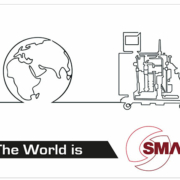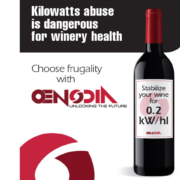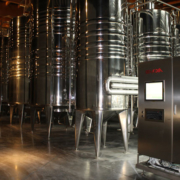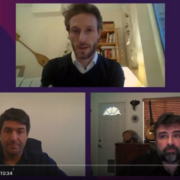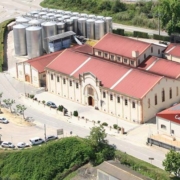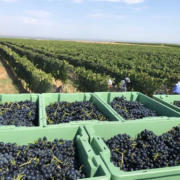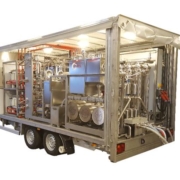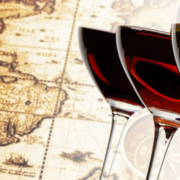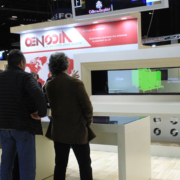SMART World Tour: the adventure continues!
/in blog, blogukAfter its first-ever outing in November 2021 at the SITEVI show in Montpellier, the SMART by STARS® then set off to explore the wine world. On a journey that spanned leading French vineyards, the Galilee uplands in Israel, the Spanish region of Castille and Leon and the hillsides of Luxembourg, our little newcomer rolled merrily along – not surprisingly, as it comes fitted with casters!
This global demonstration tour, arranged with our local partners, offered many winemakers, oenologists, cellar managers, and technical chiefs a real-time opportunity to test and appraise our wine-tech gem devoted to eco-selective stabilization in small volumes, boasting low energy use (0.2 kW/hl) and zero additives.
And now, the SMART by STARS® is back on French soil – in Bordeaux, for the Vinitech-Sifel show. Despite a growing reputation, it keeps a low profile with its ultra-compact size. Totally French from design to build, the SMART by STARS® also stands out with full automation, allowing standalone operation in minimal space. Irrespective of terroir, winery layout, and degrees of potassium / calcium in wines, it adapts, honors its commitments, and unlocks your future.
If you too wish to meet the SMART by STARS® and discover its (surprising) potential, get in touch!




Eco-selective stabilization at the service of quality-driven winemaking, respectful of both wine & environment
/in blogukLet’s head to Catalan DO Penedès, where cava holds its own with its northerly big brother, champagne.

A Catalan self-made man
The family history of entrepreneur Pere Ventura, who recently turned sixty years old, is intimately enmeshed with the rise of winemaking and economic development in the Penedès region. The story goes back to the late 19th century, when Pere Ventura’s great-grandfather was working for the famous Catalan wine producer Codorniù. His employer traveled to Champagne where he learned the secrets of the traditional method of making sparkling wines: cava, the Catalan version of champagne, was born. In turn, Pere Ventura’s grandfather trained within the Moët & Chandon group, then founded Torreblanca, the family estate in Catalonia. Torreblanca was passed on to Pere Ventura’s father, then to Pere Ventura and his siblings. However, it is alone and after giving up the family inheritance that Pere Ventura embarked on the creation, “ex nihilo”, of his own winemaking project, driven by a strong personal vision and an international ambition. That was 1992. 29 years later, Pere Ventura Wine Estate is a group of 3 Catalan estates, employing more than 100 people on a 200 hectare-vineyard. Its turnover is over 20 million euros and its international fame is growing. 4 million euros are being invested to make its Sant Sadurní cellar a jewel of innovation and technology. Over 90% of production is exported; it has received recognition through many rewards. Through the success of Pere Ventura’s wines, it is also cava in general that comes into its own, on an equal footing with the hard-to-match champagne.
Demanding excellence & respecting the environment
Such a success is not the result of chance. On the contrary, it relies on a strong work ethic & sound foundations. Respect for the land is essential: the vines are cultivated according to the principles of organic farming. Human intervention is limited to what is strictly necessary. A cover crop- which naturally regulates vine vigor & captures CO2– is maintained if necessary. Sustainability & respect for the environment remain priorities at each stage of winemaking. The brand-new cellar and the equipment it holds have been designed, down to the smallest detail, in this sense. The project is designed to minimize water & energy consumption, as carbon footprint is monitored: for example; the cellar is mostly underground, so that its temperature is naturally suitable for storing the precious nectar, which also preserves the natural landscape. The winemaking approach is smart, sustainable, and well thought-out: the best technologies have been sourced with care, often inspired by the example of Champagne. Inputs and additives are limited as much as possible. In this sense, Pere Ventura’s wines are the fruit of a delicate balance: on the one hand, let the terroir speak for itself; on the other, gently and thoughtfully guide vines & wines to their best expression.

When modernity serves tradition
The Pere Ventura project shows that intelligent technology use makes it possible to keep traditional productions alive & growing while respecting both the environment and the consumer. STARS tartaric stabilization has thus naturally found its place in the winemaking process. Pere Ventura has borrowed the principle of optimal flow management from the industrial world, with very well-thought-out sizing of equipment. The complete automation of tartaric stabilization enabled by STARS fits this philosophy, and it was a key element in the investment decision. The low energy consumption of eco-selective stabilization, compared to the cold alternative, was also strategic. Of course, & above all, STARS allows the cellar to achieve its oenological objectives: the reliability of the technology makes it possible to avoid wine loss, gushing during disgorging & to guarantee tartaric stability for export, no matter how distant. The slight drop in pH that accompanies STARS stabilization is welcome, and helps mitigate the effects of climate change on the wines of this sun-basked region. This new STARS unit in Catalonia confirms the potential of the technology among producers of cava and sparkling wines in general.
Photos: STARS has been installed in a part of the winery that will be visible to tourists.
Oenodia: first ever remote commissioning of a STARS® unit in Spain
/in bloguk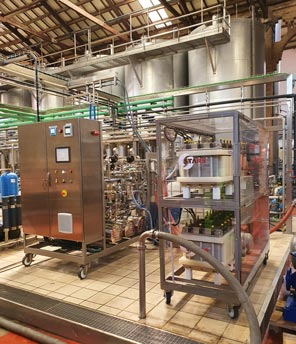
Let’s head south of Barcelona, to the Vila Rodona cooperative, a century-old winery that has remained at the leading edge of winemaking. Innovation is indeed not a question of age but of character. The Vila Rodona cooperative winery, founded in 1919, proved this by carrying out, together with the teams of OENODIA and TecnoEquip, the very first remote commissioning of a STARS unit.
The cooperative winery of Vila Rodona is located in an extraordinary architectural setting of modernista style – the Catalan version of Art Nouveau. But the real treasure lies in the tanks and bottles that patiently wait for the time when they will be ready to be tasted: Vila Rodona produces cava, an effervescent made using the traditional method, from the Macabeu, Parellada and Chardonnay grape varieties. In 2008, Vila Rodona inaugurated new aging and bottling facilities, equipped with cutting-edge technologies, in order to further improve the quality of its wines. At the end of 2019, Vila Rodona decided to acquire a STARS60 in order to respond ever more effectively to the demands of its markets. Despite the COVID-19 pandemic, TecnoEquip and Oenodia have teamed up with the cellar team to allow the delivery and commissioning of the equipment in May 2020. Oenodia has thus achieved the very first remote commissioning of its history, a feat only made possible thanks to the local support from TecnoEquip, the full involvement of all team memberss, and of course the trust of the cooperative management.
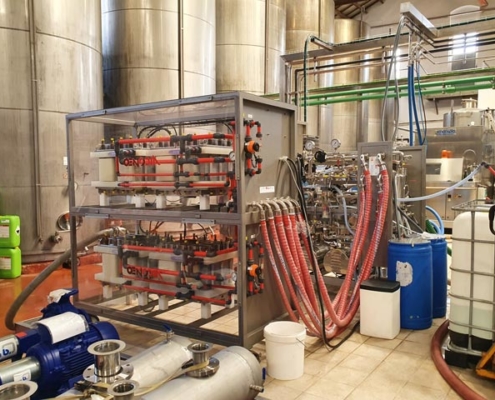
The responsiveness implemented to enable the remote commissioning of STARS® units is now more than ever an undeniable competitive advantage for responding to an increasingly globalized and uncertain market.
Winery photo credit : Celler cooperatiu de Vila Rodona
Armenia: Noah’s legacy is in safe hands
/in blog, blogukA journey to Armenia through the stunning history of Karas winery, where Oenodia will be soon commissioning a brand-new unit.
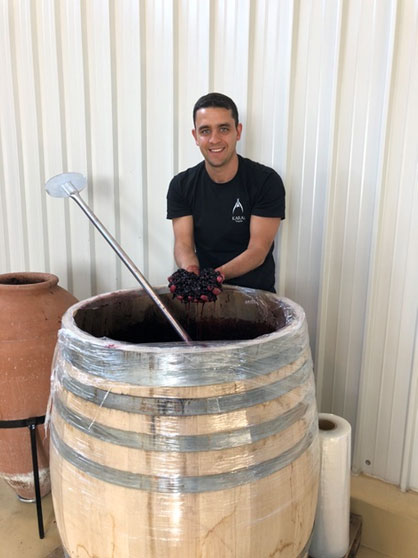 Where does the vine come from? Where did Noah plant the first one? Where was Vitis vinifera first found in its primitive form? Minor Asia, Georgia, Armenia? Fascinating questions!
Where does the vine come from? Where did Noah plant the first one? Where was Vitis vinifera first found in its primitive form? Minor Asia, Georgia, Armenia? Fascinating questions!
Let’s travel to Armenia a moment, where Oenodia will be installing the country’s first STARS unit next July. A discreet country, that has stayed out of the wine world’ turmoil, but whose oenological revival, initiated 20 years ago, is more than worth the interest.
With substantial export sales, Karas winery is a major actor of that rebirth. Gabriel Rogel, its adventurous Argentinian winemaker, now working for 7 years at Karas, has kindly agreed to share his experience and to give us some insight of the Armenian wine industry.
- What was Armenian viticulture back in the 90s?
At the fall of the Soviet Union, while Georgia was principally producing wine, viticulture was mostly dedicated to brandy in Armenia. The little amount of wine that was produced was typically entry-level sweet red and was sold locally”.
- In that context, how came the first spark of the Karas project?
Karas is all about a family coming back home. After a stunning history in Argentina, and fortified by the earlier success of Bodega del Fin del Mundo in Neuquén, the Eurnekian family decided to renew its roots within its homeland.
Back in 2002, the initial project entailed planting vines to provide premium grapes for the brandy industry. The region of Armavir happens to be the idyllic place, and its unique volcanic terroir prompted the family to try a couple fermentations, first with local grapes varieties, then planting international ones. The successful results of those trials were the spark to move forward and our first wine was released in 2010.”
- Do you intend to promote local grape varieties?
We do believe in local varieties and take advantage of their diversity in many blends, combined with international varieties.
More than most, the Areni is definitely the emblematic red variety in Armenia. Its delicate profile and herbal freshness show a great potential that we keep on mastering, year after year, by selecting our own plant material from older vines.
Another major red variety is the Sireni. Colorful and full-bodied, it makes a singular synergy blended with the Areni.
- How does this choice influence your offer and how does it fit with your sales expectations?
Both our blends and mono-varietals are a success, on the national as well as on the international market, and it’s actually difficult to keep up with the demand.
If 60% of our sales goes national, we intend to swap that figure to the export market in a few years. The Armenian diaspora is widespread, especially in the USA and Western Europe, and especially faithful to Armenian wines. That’s obviously the channels we’re aiming at.
- What’s your vision for the Armenian wine industry in the near future?
Armenia holds many terroirs and varieties, and we’re constantly learning to make the most of its incredible potential.
Wine history is here more than anywhere, and today we are reinventing winemaking to share, worldwide, the best our terroirs have to offer.
Karas in not alone. New investors, renown consultants and diligent winemakers have been working hard lately and all contribute to the rebirth and recognition of Armenian wines.
Gabriel Rogel, winemaker at Karas Winery, Armenia, interviewed by Aikouch Tchilingaryan, director of Eurodia Kuban, Russia.
STARSXF® offers unparalleled efficiency. Three days of plate and frame filtering and a month of cold stability was accomplished in 5 hours!
/in blog, bloguk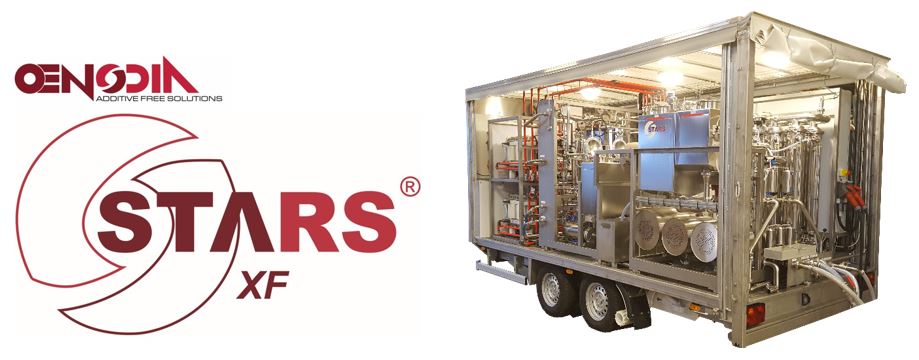
This, according to Jason McConnell, Owner and Winemaker at RIVINO Winery, following his first time utilizing Oenodia’s STARSXF®, which streamlines wine stabilization with crossflow filtration in a single pass.
April 22, 2020. Napa, CA. STARSXF® is part of the STARS Line of technologies, pairing OENODIA’s specific crossflow filter with their STARSStab unit. Over the past few months, several winemakers have employed the process through OENODIA’s STARS Mobile Service. A few have offered insight into their experience and its effectiveness in delivering a continuous process of filtration directly followed by tartrate stabilization.
Jason McConnell was among these winemakers who utilized the technology. He had seen it used at another winery and was impressed by how quickly and efficiently the cold stability process could be conducted. Ashley Highland, Consultant Winemaker from J Curtis, who also utilized the technology for the first time, had been watching STARSXF® for a while. “When I stepped into a friend’s winery in Washington and they were running their STARSXF® machine, I noticed how polished the wines looked and thought how wonderful it was that you can filter and stabilize in one pass.”
By merging the two processes into a single pass, STARSXF® delivers the well-known advantages of both technologies, eliminating DE and KHT seeding but also reducing drastically both the cold stabilization stage, and the wine losses. In addition, from a planning perspective, when you need a mobile service to handle both the crossflow filtration and the tartaric stabilization of your wines, it is much easier to plan when you have only one contact person.
“The process sped up the preparation time needed pre-bottling and left the wine more whole organoleptically” said Ashley. McConnell agreed, “We were able to get our wines to market faster than ever before.” He added “The wines tasted great and have over the months since the trial, tasted even better.”
STARSXF® also offers operational flexibility and easier tank management while retaining respect for the wines. “I have had tanks that were on cold for 6+ weeks and the DO pick-up they had, regardless of daily gassing, was too big for comfort.” Ashley said. “In addition to the draw on electricity” she added “I felt like there must be a better way for the wine and the environment. It is hard on a wine to be held so cold and then seeded, I would sometimes see cot strip the wine in a small way.”

Following her experience with STARSXF® Ashley noted “I purchase wine from all over the West coast and have to tanker the wine to a central location for blending and finishing. To have one less move is better for the wine’s quality. It was an extreme cost savings to crossflow and cold stab at the same time. Less than half the cost of filtration and traditional cold stabilization. Better for the wine and better for energy consumption”.
In conclusion, with respect to overall satisfaction both Jason and Ashley were conclusive in their opinion. Ashland was “beyond satisfied and I will use this in the future on all my wines where applicable.”
Jason went further adding: “I was completely satisfied with all aspects of the operation and hopefully will be able to purchase a unit for our new winemaking facility. Until that happens we will also be return customers for using their mobile service. I would definitely recommend this service and/or purchasing this equipment.”
For technical information, availability or service, contact Damien Monnet, Business Development Manager for OENODIA at Damien.monnet@oenodia.com at 707-302-4554 or STARS Mobile Service Manager, Cliff Burmester at Cliff.burmester@oenodia.com, 707-666-2049. Or visit them online at www.oenodia.us
Wine in Brazil: a taste for novelty
/in blogukWith a dynamic domestic market of adventurous consumers looking for novelty and quality, Brazilian wine production is naturally boosted. Increased appreciation towards espumante, Brazilian sparkling wine, is noted both at home and abroad.
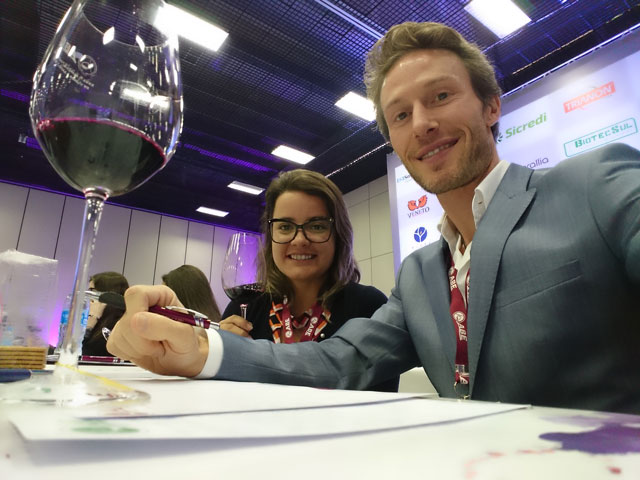
Renata & Fabien (Oenodia) at Wine South America, sept. 2019
Major producer, few consumers
7% of Brazilian adults enjoy wine almost every day – which means around 1.6 million daily consumers. Despite a low domestic consumption – 330 million litres, amounting to a yearly per-capita of 2 litres, compared to 50L for the French or… 59L for the Portuguese- Brazil is a major wine producer, the 13th in the world. According to the OIV (International Wine Organization), Brazil produced around 400 million litres in 2019.
90% of Brazilian wine production is located in the southern State of Rio Grande do Sul, where the Brazilian Wine Institute Ibravin counts 680 wine producers3.
Sparkling wines making a splash
Enjoying a glass of wine might not be a part of Brazilian culture yet, but recent market trends hint that we are slowly getting there. The number of regular consumers has been on a steady rise, reaching 32 million people in 2019, according to a Wine Intelligence study for Ibravin.
The driving force behind the rise? Rosé wine consumption, which went from a 2,1% market share in 2015 to 5,1 in 2019, and sparkling espumante wine consumption, the latter being lauded for their high quality. On a more global scale, wine consumption is expected to increase in developing economies, such as Brazil, and decrease in developed countries2.
Looking for something new
These statistics reveal the relatively untapped potential of the Brazilian market, where consumers, deemed adventurous, are on the lookout for novelty and quality4. To explore that potential, you might be interested in visiting the Wine South America trade show, happening every year in Bento-Goncalves. You may very well bump into an Oenodia team member there.
Enjoyed the read? Stay in touch for more on LinkedIn.
Um abraço,
Renata for the Oenodia team
1 https://www.clubedosvinhos.com.br/a-trajetoria-do-vinho-no-brasil/
2 https://www.wineintelligence.com/downloads/brazil-landscapes-2019/
https://www.meuvinho.com.br/news/783/mercado-de-vinhos-no-brasil-apresenta-crescimento
3 https://www.ibravin.org.br/admin/arquivos/estatisticas/1564503491.pdf
4 https://www.wine-xt.com/pt-br/blog/2019/12/12/previsoes-mercado-de-vinho-2019-veja-resultados
SITEVI 2019/OENODIA : welcome to the future
/in blogukInnovation must be a part of OENODIA’s identity : this year, while preparing for the SITEVI – the Montpellier-based, major tradeshow of the wine industry, OENODIA got the itch to renew the way they showcase their Stars® solutions. So as to reflect the high-end, high-tech quality of the technologies provided, the company found the proper media with a holographic display-window and a 4K touchscreen table.
The holographic window displayed Champagne Mumm’s newest acquisition, a comprehensive OENODIA line of process to complete bottling prep (tartaric stabilization + crossflow filtration) in a single pass: a STARS120 unit paired with a 180 m² XF filter. OENODIA got the wow effect they were aiming for, drawing visitors in to have a closer look at the illusion. Innovation went hand-in-hand with tradition – swing & champagne livened up the usual after-hour party.
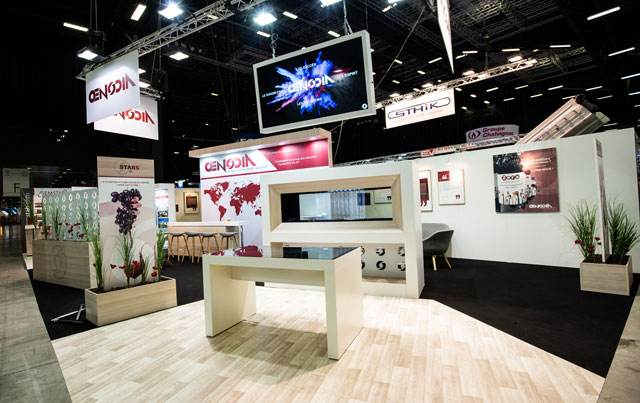
Naturally, with Mumm given the spotlight on the stand, a hot topic of discussion was OENODIA’s growing market in the sparkling industry.
Stars®’s recent successes in Germany, California and the UK follow the continuous development in the sparkling industry, already hooked in the Prosecco region of Italy, or the Cava region in Spain.
Stars® technology is indeed ticking many boxes off sparkling producers’ wish list : it is the only method that can stabilize both potassium and calcium tartrate ; it cuts down gushing issues ; it provides a 6 days/-4°C potassium tartrate stability guarantee ; it offers unrivalled reactivity as a continuous process.
So, as both the tradeshow season and the year wrap up, let’s raise a glass to past successes and projects ahead !
Oenodia
Contact
OENODIA
ZAC St Martin
528 chemin de Saint Martin
84120 – Pertuis – FRANCE
Tel+33 (0)4 90 08 75 00
Fax+33 (0)4 90 08 75 19


